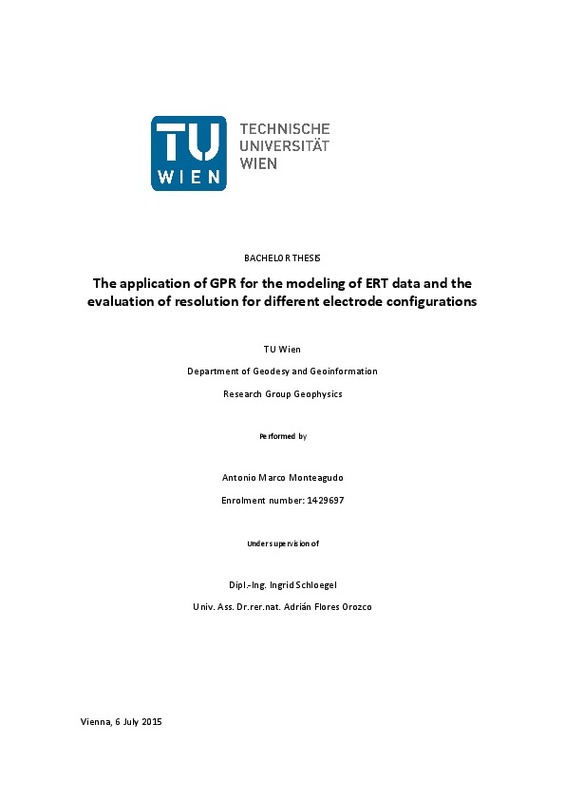JavaScript is disabled for your browser. Some features of this site may not work without it.
Buscar en RiuNet
Listar
Mi cuenta
Estadísticas
Ayuda RiuNet
Admin. UPV
The application of GPR for the modeling of ERT data and the evaluation of resolution for different electrode configurations
Mostrar el registro sencillo del ítem
Ficheros en el ítem
| dc.contributor.advisor | Padin Devesa, Jorge
|
es_ES |
| dc.contributor.author | Marco Monteagudo, Antonio
|
es_ES |
| dc.date.accessioned | 2015-10-23T14:16:04Z | |
| dc.date.available | 2015-10-23T14:16:04Z | |
| dc.date.created | 2015-10-05 | |
| dc.date.issued | 2015-10-23 | |
| dc.identifier.uri | http://hdl.handle.net/10251/56439 | |
| dc.description.abstract | [EN] This thesis aims at improving the acquisition of ERT measurements taking into account existing information and GPR results. To achieve this, extensive numerical examples were performed using GPR results for the modeling of ERT datasets for different electrode configurations. Further inversion of the datasets permitted to evaluate the resolution of the electrical images. My results demonstrate the benefits of working with the combination of GPR and ERT. If we analyze both methods independently they provide information of special changes in the electrical properties of the subsurface. From GPR it can extract qualitative information interpreting the radargrams and from ERT it can obtain quantitative information analyzing the electrical properties from datasets. The methodology investigated in this thesis is to use GPR results for the digitalization of electrical models. Such electrical models could be used in the forward modeling of ERT datasets –i.e., to investigate the resolution of inversion results for different configurations-, but also to improve the interpretation of the resulting electrical parameters. Is hard to interpret the inverse imaging of ERT without extra information, for this reason the use of GPR results improve the interpretation of electrical imaging. With the combination of both techniques it is intended to obtain qualitative and quantitative information of the subsurface –i.e., water content, geophormological structures, hydrogeological parameters, etc. -. The interpretation of radargrams, as obtained from GPR, gives qualitative information about buried structures, whereas ERT gives quantitative information about the resistivity of electrical current after the inversion data. | es_ES |
| dc.format.extent | 31 | es_ES |
| dc.language | Inglés | es_ES |
| dc.publisher | Universitat Politècnica de València | es_ES |
| dc.rights | Reserva de todos los derechos | es_ES |
| dc.subject | Subsuelo | es_ES |
| dc.subject | Propiedades eléctricas | es_ES |
| dc.subject | Electrodos | es_ES |
| dc.subject | Imágenes digitales | es_ES |
| dc.subject | Digitalización | es_ES |
| dc.subject | Radargramas | es_ES |
| dc.subject | Radar | es_ES |
| dc.subject | Georradar | es_ES |
| dc.subject | GPR | es_ES |
| dc.subject | Medición ERT | es_ES |
| dc.subject.classification | INGENIERIA CARTOGRAFICA, GEODESIA Y FOTOGRAMETRIA | es_ES |
| dc.subject.other | Grado en Ingeniería en Geomática y Topografía-Grau en Enginyeria Geomàtica i Topografia | es_ES |
| dc.title | The application of GPR for the modeling of ERT data and the evaluation of resolution for different electrode configurations | es_ES |
| dc.type | Proyecto/Trabajo fin de carrera/grado | es_ES |
| dc.rights.accessRights | Abierto | es_ES |
| dc.contributor.affiliation | Universitat Politècnica de València. Escuela Técnica Superior de Ingeniería Geodésica, Cartográfica y Topográfica - Escola Tècnica Superior d'Enginyeria Geodèsica, Cartogràfica i Topogràfica | |
| dc.description.bibliographicCitation | Marco Monteagudo, A. (2015). The application of GPR for the modeling of ERT data and the evaluation of resolution for different electrode configurations. Universitat Politècnica de València. http://hdl.handle.net/10251/56439 | es_ES |
| dc.description.accrualMethod | Archivo delegado | es_ES |
Este ítem aparece en la(s) siguiente(s) colección(ones)
-
ETSIGCT - Trabajos académicos [494]
Escuela Técnica Superior de Ingeniería Geodésica, Cartográfica y Topográfica






